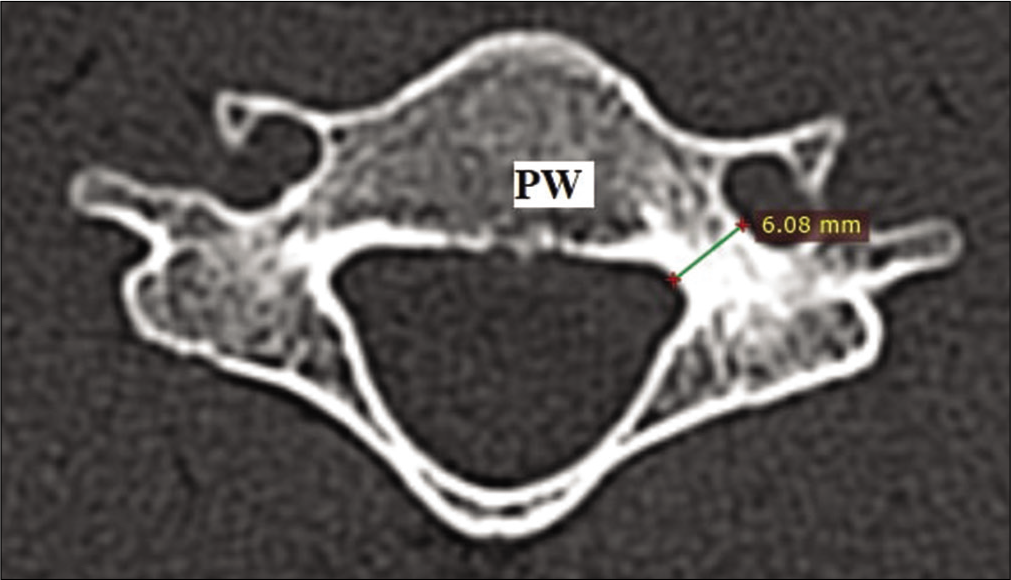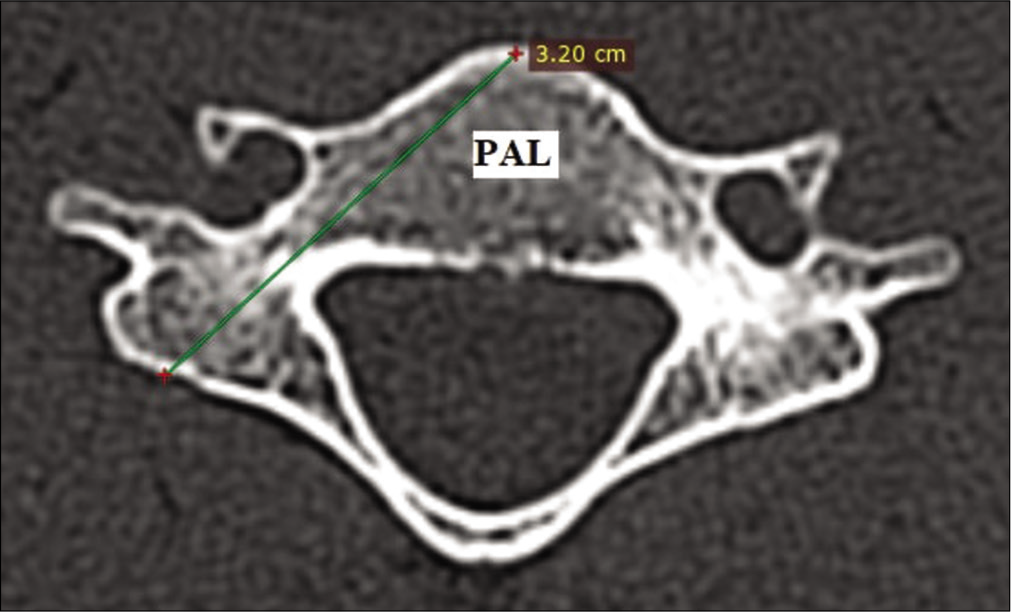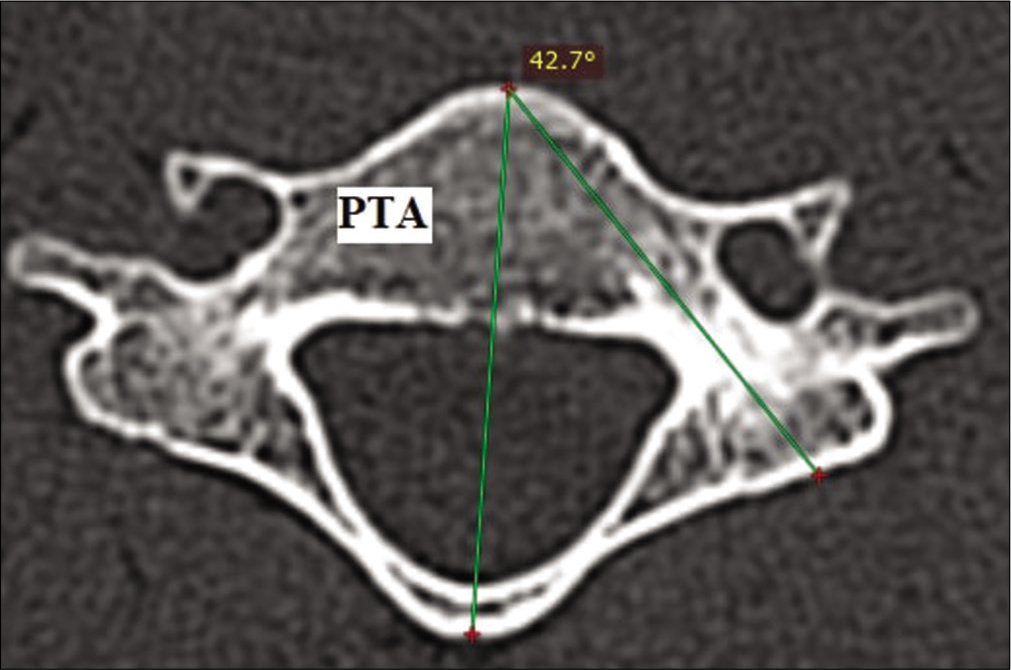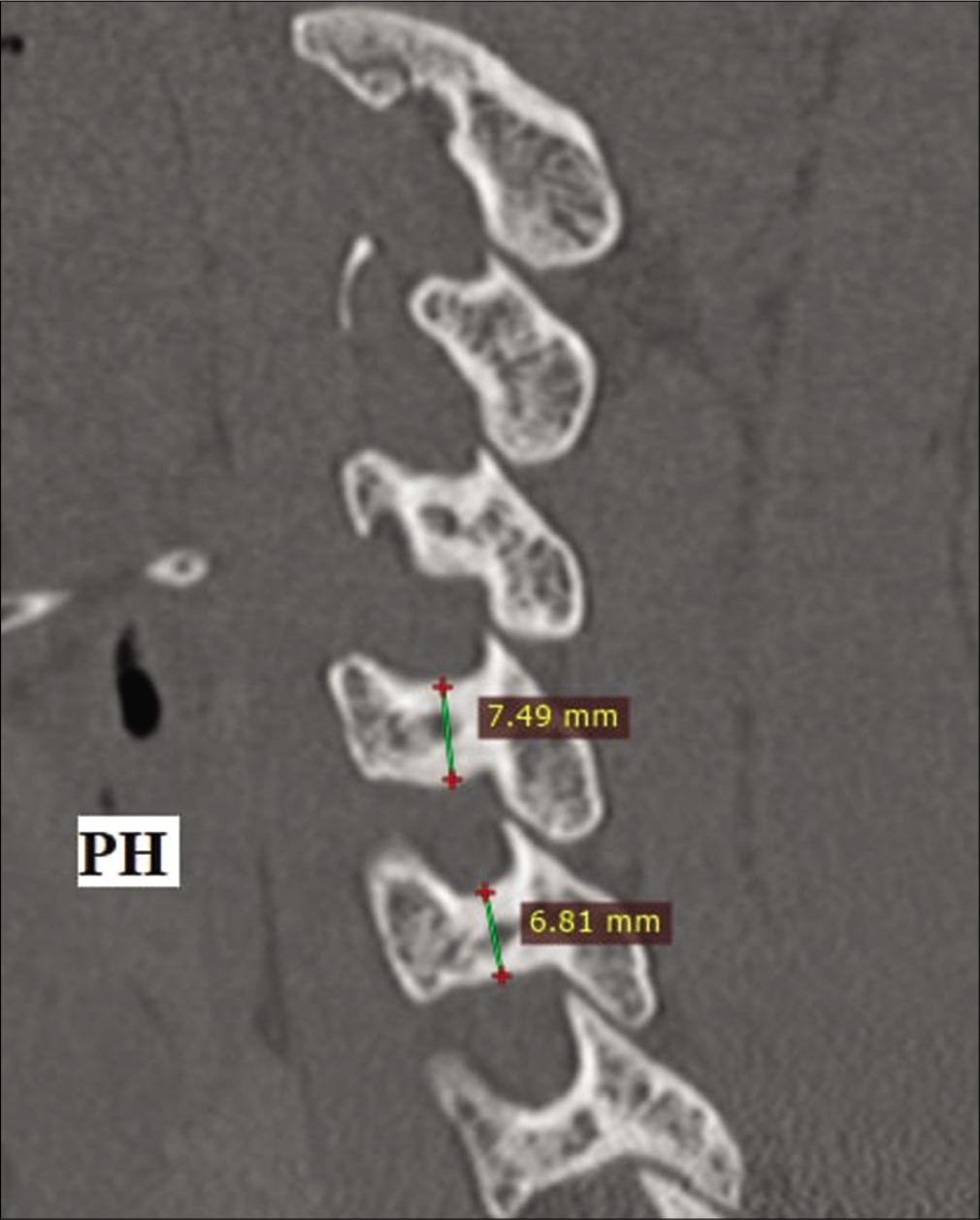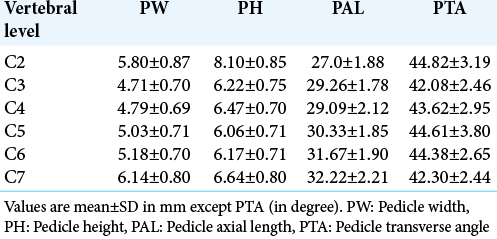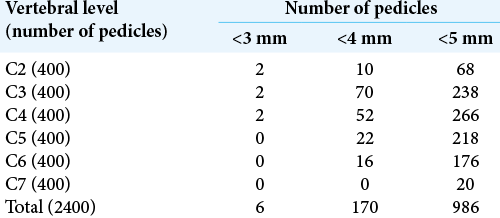- Department of Orthopedics, Guru Teg Bahadur Hospital, University College of Medical Sciences, New Delhi, India.
- Department of Orthopedics, Dr Ram Manohar Lohia Hospital, University College of Medical Sciences, New Delhi, India.
- Department of Radiology, Guru Teg Bahadur Hospital, University College of Medical Sciences, New Delhi, India.
Correspondence Address:
Naresh Kumar Saini
Department of Radiology, Guru Teg Bahadur Hospital, University College of Medical Sciences, New Delhi, India.
DOI:10.25259/SNI_926_2020
Copyright: © 2020 Surgical Neurology International This is an open-access article distributed under the terms of the Creative Commons Attribution-Non Commercial-Share Alike 4.0 License, which allows others to remix, tweak, and build upon the work non-commercially, as long as the author is credited and the new creations are licensed under the identical terms.How to cite this article: Sanjeev Kumar1, Naresh Kumar Saini1, Devender Singh2, Manish Chadha1, Gopesh Mehrotra3. Computed tomographic analysis of cervical spine pedicles in the adult Indian population. 23-Feb-2021;12:68
How to cite this URL: Sanjeev Kumar1, Naresh Kumar Saini1, Devender Singh2, Manish Chadha1, Gopesh Mehrotra3. Computed tomographic analysis of cervical spine pedicles in the adult Indian population. 23-Feb-2021;12:68. Available from: https://surgicalneurologyint.com/?post_type=surgicalint_articles&p=10603
Abstract
Background: Cervical pedicle screw insertion is a technically demanding procedure that carries the risk of catastrophic damage to surrounding neurovascular structures. Here, we analyzed computed tomography (CT)-based three-dimensional cervical spine pedicle geometry to determine the level and sex-specific morphologic differences in the adult Indian population.
Methods: The CT scans of 200 patients (2400 pedicles) without significant cervical spine pathology were collected. The mean pedicle width (PW), pedicle height (PH), pedicle axial length (PAL), and pedicle transverse angle (PTA) from C2 to C7 were measured.
Results: The smallest mean PW was at C3 in both males (4.85 ± 0.73 mm) and females (4.31 ± 0.43 mm); 7.08% of all pedicles were found to have mean PW of P
Conclusion: In the adult Indian population, the PW, PH and PAL were smaller than in the typical western population. Females had even smaller PW, PH and PAL as compared to males. We recommend that a small inventory of 3.5mm screws between 20mm to 30mm length be used in most cases where cervical pedicle screws are being used in the Indian population. However, individual vertebrae should be screened preoperatively with CT scans to exclude gross anatomical variations, especially in females and at the C3 and C4 levels.
Keywords: Cervical spine, Pedicle screw fixation, Pedicles morphometry
INTRODUCTION
Cervical spine fixation is needed in various conditions affecting spine, but there is considerable variability in cervical spine pedicle dimensions at each level.[
MATERIALS AND METHODS
With Institutional Review Board approval, we performed this prospective, observational, and single center study (2015–2017). Utilizing 3D-CT scans (using C2-C7 with 0.6mm cuts), we measured 2400 cervical spine pedicles from 200 patients. The study included 148 males and 52 females averaging 31.32 years of age (range 18-45 years). There were multiple exclusion criteria [
3D-CT images (read by one Orthopedician and one Radiologist) were utilized to measure pedicle width (PW), pedicle height (PH), pedicle axial length (PAL), and pedicle transverse angle (PTA) [
Statistical analysis
Descriptive statistics (mean, standard deviation) were determined. Intra-class Correlation Coefficient (ICC) was calculated to find inter-observer agreement and to analyze intra-observer agreement paired t-test (95% confidence level) was performed. To identify difference between males and females, right and left side, an independent sample t-test and paired t-test, respectively, with 95% confidence level were performed.
RESULTS
In our observations, we found that there was no significant difference between two measurements that were taken by same observer and also inter-observer agreement was very good for measurement of PW (ICC 0.95), PH (ICC 0.91), PAL (ICC 0.94), and PTA (ICC 0.92), at all cervical vertebral levels.
PW
The smallest mean PW was at C3 and largest mean PW was at C7 in both males and females while the mean PW for males was statistically significantly greater than females at all level from C2 to C7. Furthermore, noted that the mean PW for right side was greater than left side at all level from C2 to C7 (statistically significant at C3- C6) [
PH
The smallest mean PH was at C5 and largest at C2 in both males and females. At all levels PH was greater than PW. The mean PH for males was statistically significantly greater than females at all level from C2 to C7 [
PAL
The smallest mean PAL was at C2 in both males (27.46 ± 1.69 mm) and females (25.90 ± 1.88 mm), while the largest mean PAL was at C7 in males (32.94 ± 1.87 mm) and C6 in females (30.35 ± 1.66 mm) [
PTA
The smallest mean PTA was at C3 in males (41.79 ± 2.53°) and at C7 in females (42.40 ± 2.27°), while the largest mean PTA was at C2 in males (44.74 ± 3.15º) and at C5 in females (45.29 ± 2.75°) [
DISCUSSION
Cervical pedicle screw fixation is technically demanding procedure as it has risk of injury to the surrounding neurovascular structures. Munusamy et al.[
We also found that PW progressively increased for both males and females from C3 to C7, a finding also echoed to prior Indian studies.[
Based on our finding regarding 3D-CT confirmation of pedicle size in Indian adults, we would recommend that 3.5 mm screws be utilized from the C2 to C7 levels, although 7.08% of pedicles would likely not suitable for such 3.5/4 mm screws.
Further, since we observed, the mean PAL for Indian patients fell within a narrow range of 25.90mm to 32.94 mm from C2 to C7 which is smaller than American population (range from 28.9 mm to 34.3 mm) and similar to Chinese population (range from 27.9mm to 32.5mm), a small inventory of screw lengths ranging from 20 mm to 30 mm should be kept on hand [
The mean PTA in our study was within a narrow range of 41.79° to 45.29°. Therefore, a rough guideline for angle could be around 40-45° from midline.
CONCLUSION
Having performed a 3D CT analysis of cervical pedicle morphometry (including PW, PH, PAL, and PTA) in the adult Indian population, we determined that 3.5 mm screws between 20 mm to 30 mm length would usually be sufficient in most cases requiring posterior cervical instrumented fusion.
Declaration of patient consent
Institutional Review Board permission obtained for the study.
Financial support and sponsorship
Publication of this article was made possible by the James I. and Carolyn R. Ausman Educational Foundation.
Conflicts of interest
There are no conflicts of interest.
References
1. Bozbuga M, Ozturk A, Ari Z, Sahinoglu K, Bayraktar B, Cecen A. Morphometric evaluation of subaxial cervical vertebrae for surgical application of transpedicular screw fixation. Spine (Phila Pa 1976). 2004. 29: 1876-80
2. Ebraheim NA, Xu R, Knight T, Yeasting RA. Morphometric evaluation of lower cervical pedicle and its projection. Spine (Phila Pa 1976). 1997. 22: 1-6
3. Farooque K, Yadav R, Chowdhury B, Gamanagatti S, Kumar A, Meena PK. Computerized Tomography-based morphometric analysis of subaxial cervical spine pedicle in asymptomatic Indian population. Int J Spine Surg. 2018. 12: 112-20
4. Herrero CF, do Nascimento AL, Maranho DA, Ferreira-Filho NM, Nogueira CP, Nogueira-Barbosa MH. Cervical pedicle morphometry in a Latin American population: A Brazilian study. Medicine (Baltimore). 2016. 95: e3947
5. Munusamy T, Thien A, Anthony MG, Bakthavachalam R, Dinesh SK. Computed tomographic morphometric analysis of cervical pedicles in a multi-ethnic Asian population and relevance to subaxial cervical pedicle screw fixation. Eur Spine J. 2015. 24: 120-6
6. Patwardhan AR, Nemade PS, Bhosale SK, Srivastava SK. Computed tomography-based morphometric analysis of cervical pedicles in Indian population: A pilot study to assess feasibility of transpedicular screw fixation. J Postgrad Med. 2012. 58: 119-22
7. Rajasekaran S, Kanna PR, Shetty TA. Intra-operative computer navigation guided cervical pedicle screw insertion in thirty-three complex cervical spine deformities. J Craniovertebr Junction Spine. 2010. 1: 38-43
8. Rao RD, Marawar SV, Stemper BD, Yoganandan N, Shender BS. Computerized tomographic morphometric analysis of subaxial cervical spine pedicles in young asymptomatic volunteers. J Bone Joint Surg Am. 2008. 90: 1914-21
9. Ruofu Z, Huilin Y, Xiaoyun H, Xishun H, Tiansi T, Liang C. CT evaluation of cervical pedicle in a Chinese population for surgical application of transpedicular screw placement. Surg Radiol Anat. 2008. 30: 389-96
10. Zhou RP, Jiang J, Zhan ZC, Zhou Y, Liu ZL, Yin QS. Morphological character of cervical spine for anterior transpedicular screw fixation. Indian J Orthop. 2013. 47: 553-8



